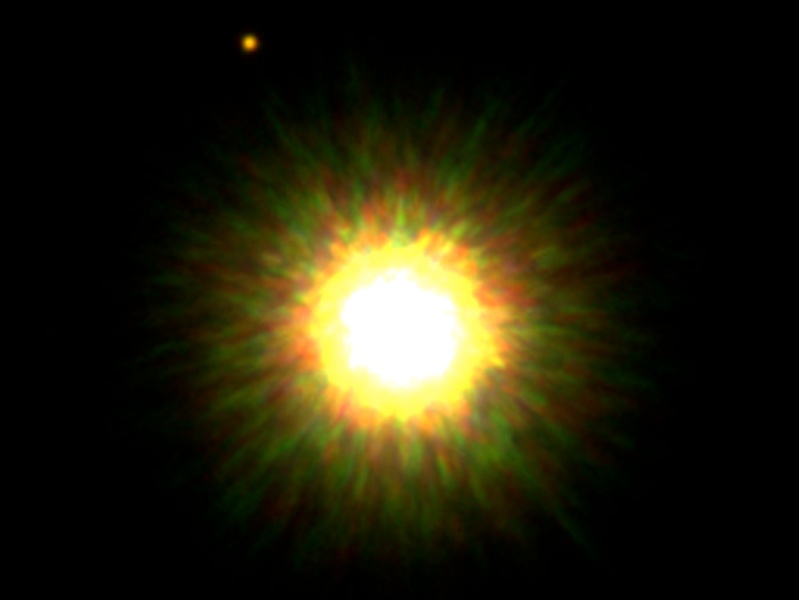Credit & Copyright:
Credit Gemini Observatory, D. Lafreniere, R. Jayawardhana, M. van Kerkwijk (Univ. Toronto)
Explanation:
Located just 500 light-years away toward the constellation
Scorpius,
this star is only slightly less massive and a little cooler than
the Sun.
But it is much younger, a few
million years old
compared to the middle-aged Sun's 5
billion years.
This sharp infrared
image shows the young star has a likely companion
positioned above and left - a hot planet with about 8 times
the mass of Jupiter, orbiting a whopping 330 times the Earth-Sun
distance from its parent star.
The young planetary companion is still hot and relatively
bright in
infrared light due to
the heat generated during its formation by
gravitational contraction.
In fact, such newborn planets are easier to detect
before they age and cool, becoming much fainter.
Though over 300
extrasolar
planets have been found using other
techniques, this picture likely represents the
first direct image
of a planet belonging to a star
similar to the Sun.
Credit Gemini Observatory, D. Lafreniere, R. Jayawardhana, M. van Kerkwijk (Univ. Toronto)
1999 2000 2001 2002 2003 2004 2005 2006 2007 2008 2009 2010 2011 2012 2013 2014 2015 2016 2017 2018 2019 2020 2021 2022 2023 2024 2025 |
Январь Февраль Март Апрель Май Июнь Июль Август Сентябрь Октябрь Ноябрь Декабрь |
NASA Web Site Statements, Warnings, and Disclaimers
NASA Official: Jay Norris. Specific rights apply.
A service of: LHEA at NASA / GSFC
& Michigan Tech. U.
|
Публикации с ключевыми словами:
extrasolar planet - экзопланета
Публикации со словами: extrasolar planet - экзопланета | |
См. также:
Все публикации на ту же тему >> | |
